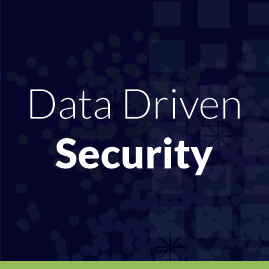By Bob Rudis (@hrbrmstr)
Sun 20 April 2014
|
tags:
datavis,
hbr,
-- (permalink)
The Harvard Business Review (@HarvardBiz) online magazine* is chock full of great articles, many of which intersect with the notion of creating compelling narratives and/or visualizations with data (two of the premises we talk about frequently in our book). Here are some excellent data-oriented articles there that I felt warranted a blog post to consolidate and share.
First up is “How to Tell a Story with Data” by Jim Stikeleather. He delves into five points that are key once you have delved into data and unlocked it:
- Find the compelling narrative
- Think about your audience
- Be objective and offer balance
- Don’t Censor
- Edit, Edit, Edit
These concepts are paramount for telling information security/risk management “data stories”. The narrative should come from data versus cherry picking data to support a belief/idea/concept and you’ll get far more support for whatever you’re trying to communicate if you consider the audience.
Next, Gretchen Gavett (@gretchenmarg) does a great job delving into “How GE Uses Data Visualization to Tell Complex Stories” in a Q&A form (it’s worth reading+viewing the whole thing).
Strikeleather focuses on data visualation in When Data Visualization Works — And When It Doesn’t:
Ultimately, data visualization is about communicating an idea that will drive action. Understanding the criteria for information to provide valuable insights and the reasoning behind constructing data visualizations will help you do that with efficiency and impact.
He talks about data needing to be “interpretable, relevant, and novel” and gives three core reasons to move from words to pictures:
- Confirmation (visualizations can help us check assumptions)
- Education (either just reporting or through intuition+insight)
- Exploration (the concept of EDA - Exploratory Data Analysis - that we cover pretty thoroughly in an infosec context in our book)
He also makes a point to stress the need to factor in data quality, visualization context and creator+consumer biases.
Finally (at least for this post), Nancy Duarte (@nancyduarte) lays out The Quick and Dirty on Data Visualization for those in a hurry (or who learn more from makeovers than “how-to’s”), covering five questions that you should keep handy when thinking about preparing and presenting a data visualization:
- Am I presenting or circulating my data?
- Am I using the right kind of chart or table?
- What message am I trying to convey?
- Do my visuals accurately reflect the numbers?
- Are my data memorable?
If you found some other nuggets of wisdom over on HBR or found any of these especially useful, don’t hesitate to share your thoughts in the comments.
